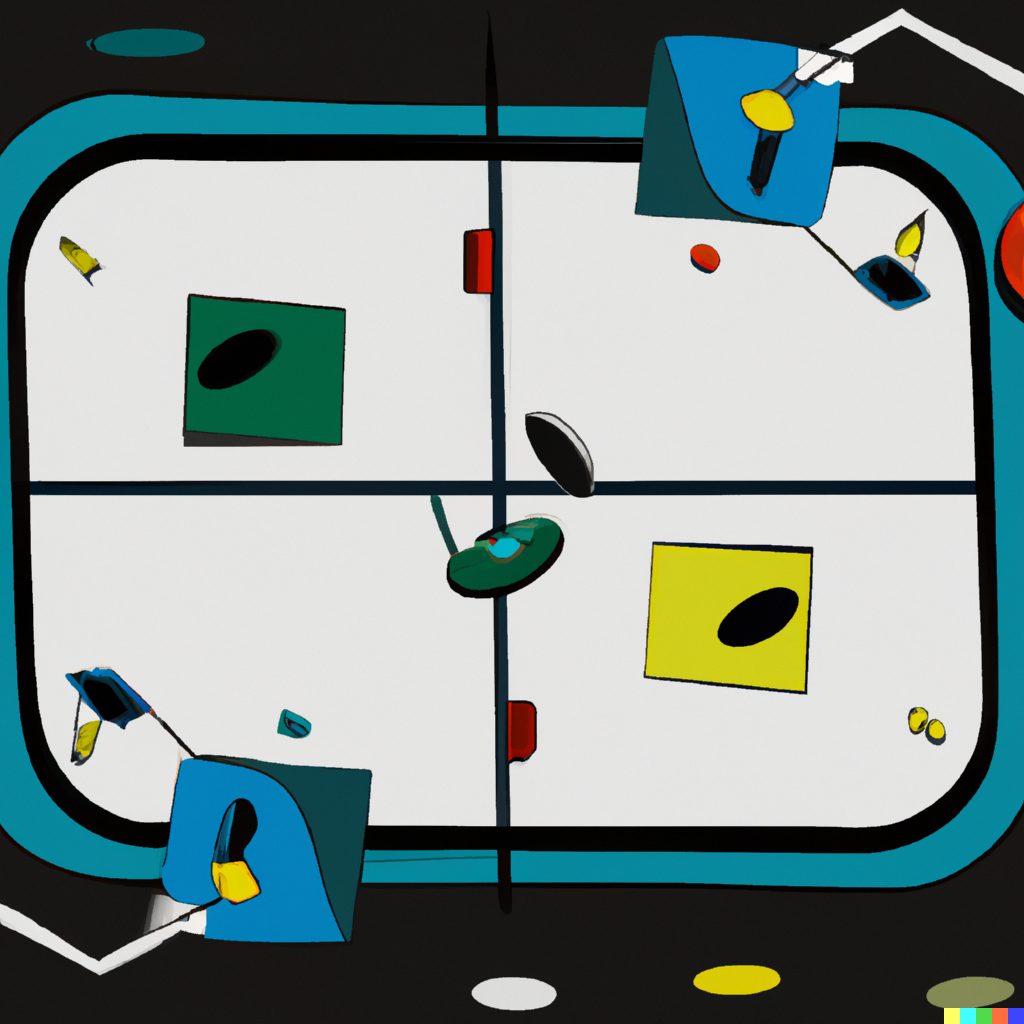
SMART AIR HOCKEY TABLE
Project Description
The Smart Air Hockey Table (SAHT) redefines the classic arcade game, offering an immersive experience like no other. Central to its advanced gameplay is a vibrant grid of RGB LEDs, dynamically illustrating the puck’s position and game events. This real-time interactivity is made possible by a carefully arrayed set of hall effect sensors, which pinpoint the puck’s every move. Additionally, the SAHT incorporates photoresistor and LED pairs at each goal slot, ensuring precise goal detection and accurate score registration. An integrated OLED display then showcases the game score.
The hall effect sensors are strategically embedded beneath the translucent playing field in a grid pattern. These sensors detect changes in magnetic fields. As the puck, equipped with a small magnet, glides across the surface, the sensors underneath identify its precise location by sensing the magnetic field changes caused by the puck’s movement. The density and layout of this grid ensure the puck’s position is determined with high accuracy, allowing the system to provide real-time feedback. For instance, as the puck moves, the individually controlled LEDs beneath the surface illuminate its path, creating a mesmerizing trail effect that enhances the overall gaming experience.
This grid-based hall effect sensor system not only offers unparalleled precision in puck tracking but also enables the microcontroller to interpret rapid changes in direction and speed. Such granular detail ensures that dynamic visuals generated by the LEDs are always synchronized with the puck’s position and movement. Players, therefore, experience a highly responsive and visually rich gameplay, where the table reacts instantly to every twist and turn of the puck.
Combined with other features like the OLED score display and photoresistor-based goal detection, the SAHT offers an intuitive yet futuristic air hockey experience. It seamlessly merges traditional gameplay with modern tech enhancements, ensuring that both newcomers and seasoned players are treated to an unmatched recreational encounter.
The SAHT taps into a standard 120 VAC wall outlet and employs an off the shelf AC/DC regulator to produce a steady 5VDC. A buck converter provides the microcontroller and other components on the main PCB with 3.3VDC by stepping down from the regulator’s 5VDC output. The boards hosting the RGB LEDs and Hall effect sensors are powered directly by the 5VDC from the regulator.
Project Specific Design Requirements (PSDRs)
The design and development of the smart air hockey table will adhere to the following focused design requirements to ensure a successful and captivating gameplay experience:
- PSDR #1 (Hardware): An ability for the microcontroller to determine the puck’s position on the playing surface by interpreting signals from a grid of hall effect switches beneath it, using digital gates to consolidate individual signals into row and column bit vectors.
- PSDR #2 (Hardware): An ability for the microcontroller to automatically detect goals scored using an LED and analog photoresistor pair digitized using a comparator installed at each goal.
- PSDR #3 (Hardware): An ability for the microcontroller to display game score on an OLED display using the SPI protocol.
- PSDR #4 (Hardware): An ability for the microcontroller to to control a large grid of individually-addressable WS2812B RGB LEDs beneath the playing surface using the LED’s custom communication protocol.
- PSDR #5 (Hardware): An ability to provide power to the microcontroller at 3.3V using a buck converter from a 5V source.
Stretch Goal PSDRs (EPSDRs)
The following are the two stretch goals determined by the team:
- EPSDR #1 (Hardware): An ability for the microcontroller to store graphical animations and save game score on an EEPROM.
- EPSDR #2 (Software): An ability for the players to control the brightness of the RGB LED grid and winning game score number by interfacing with a rotary encoder and a menu on the OLED display.